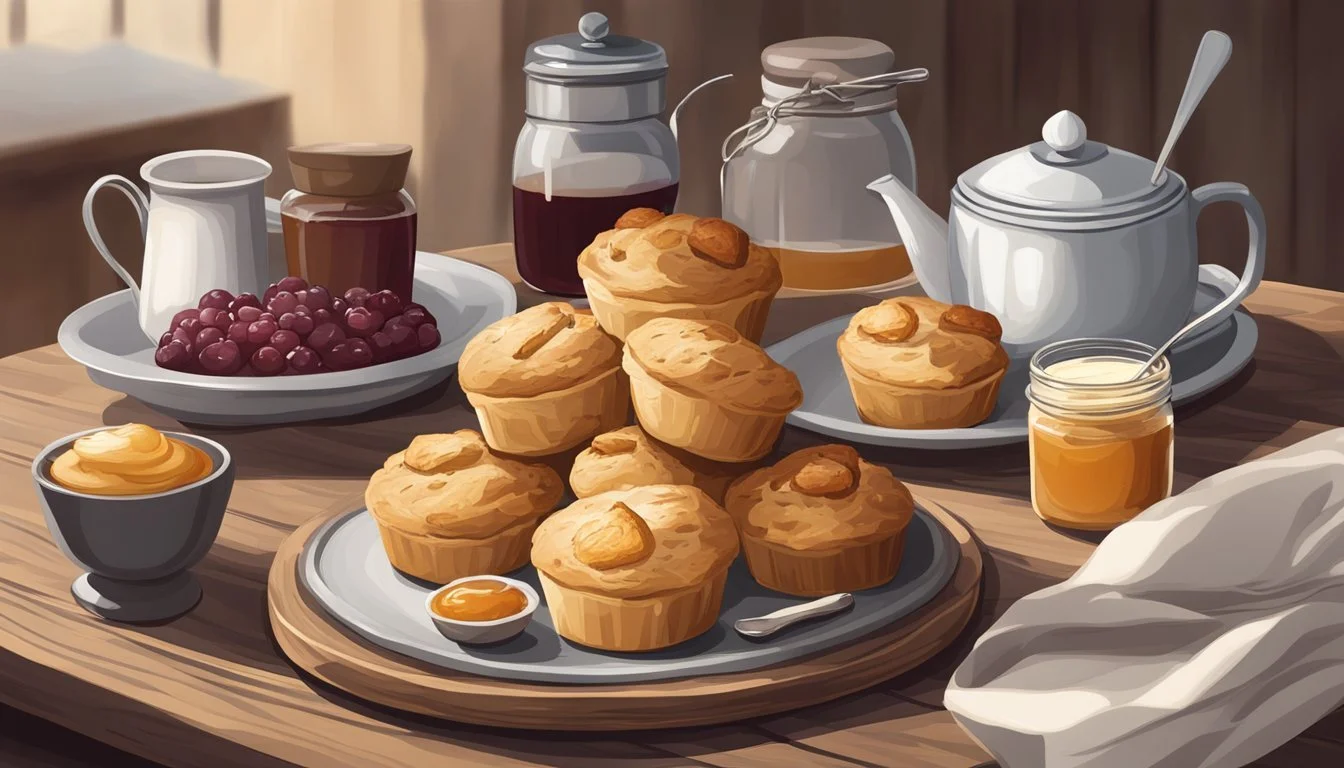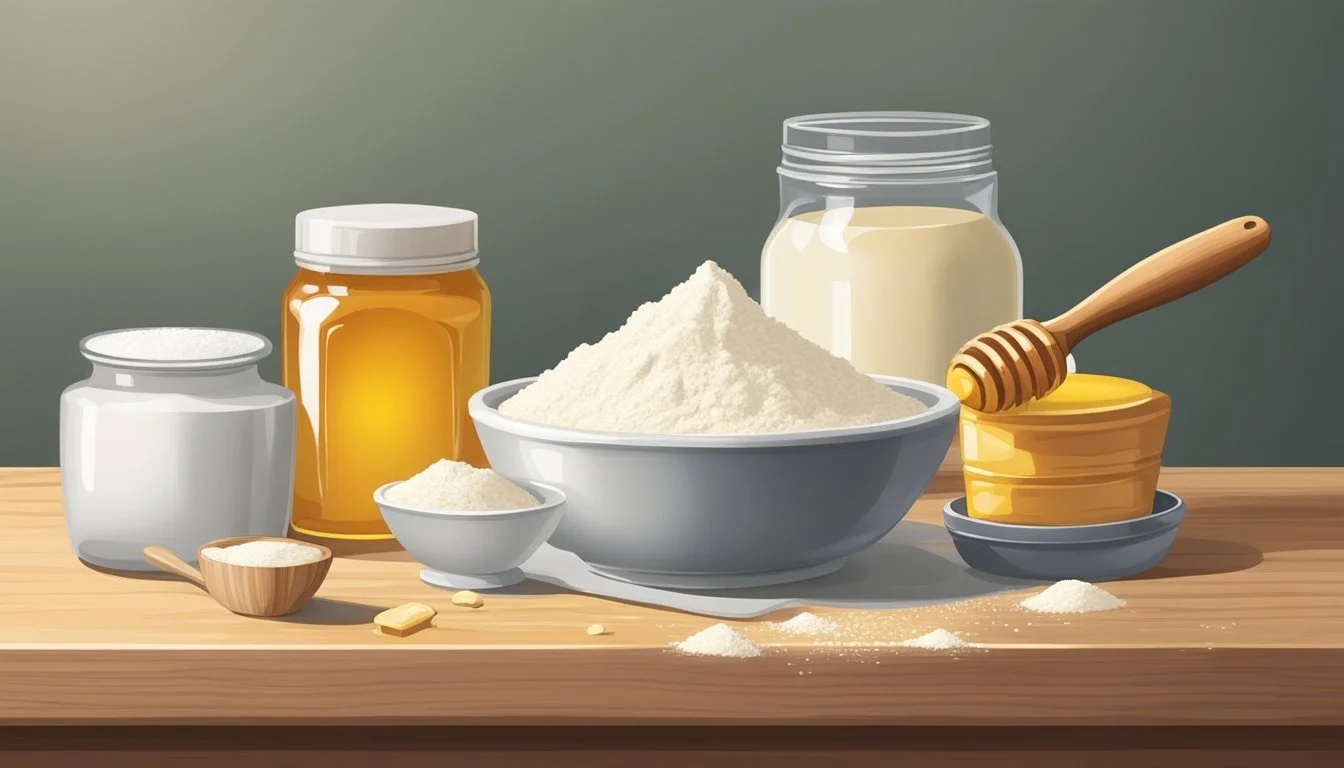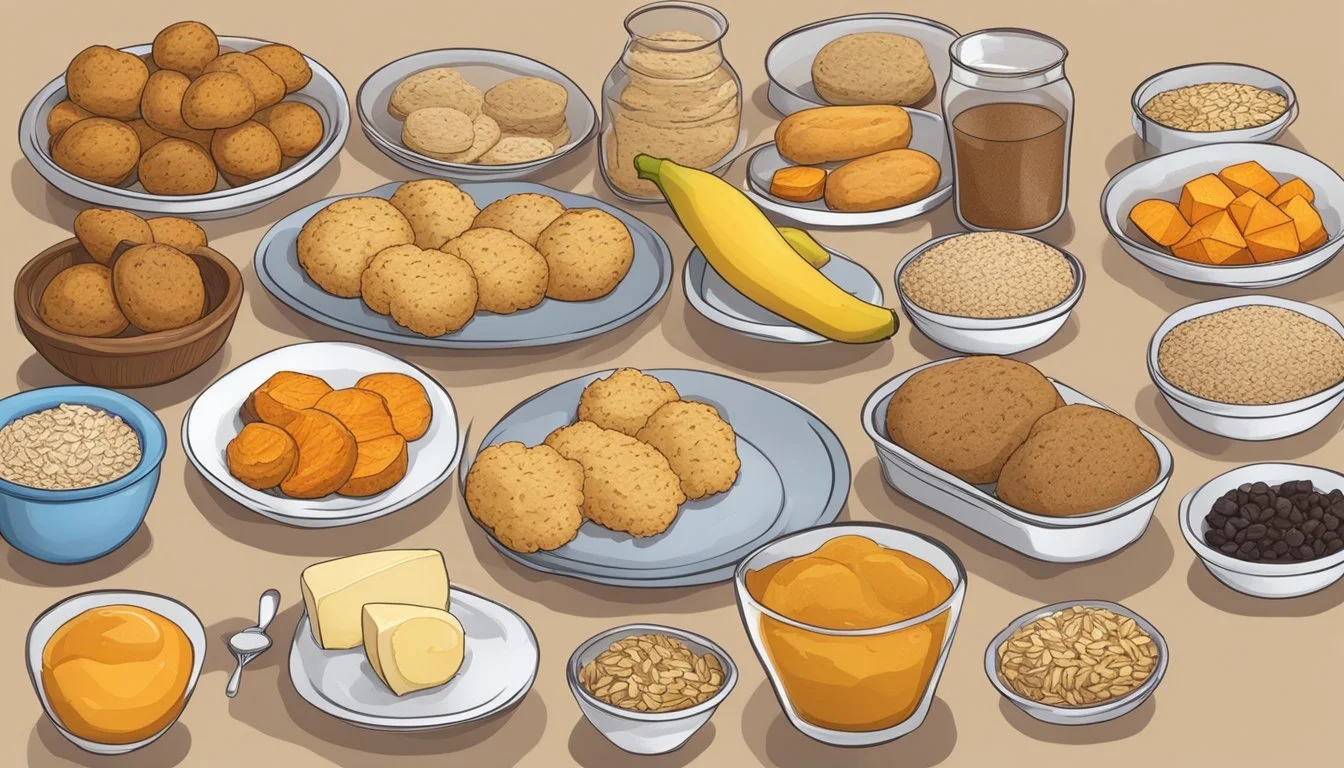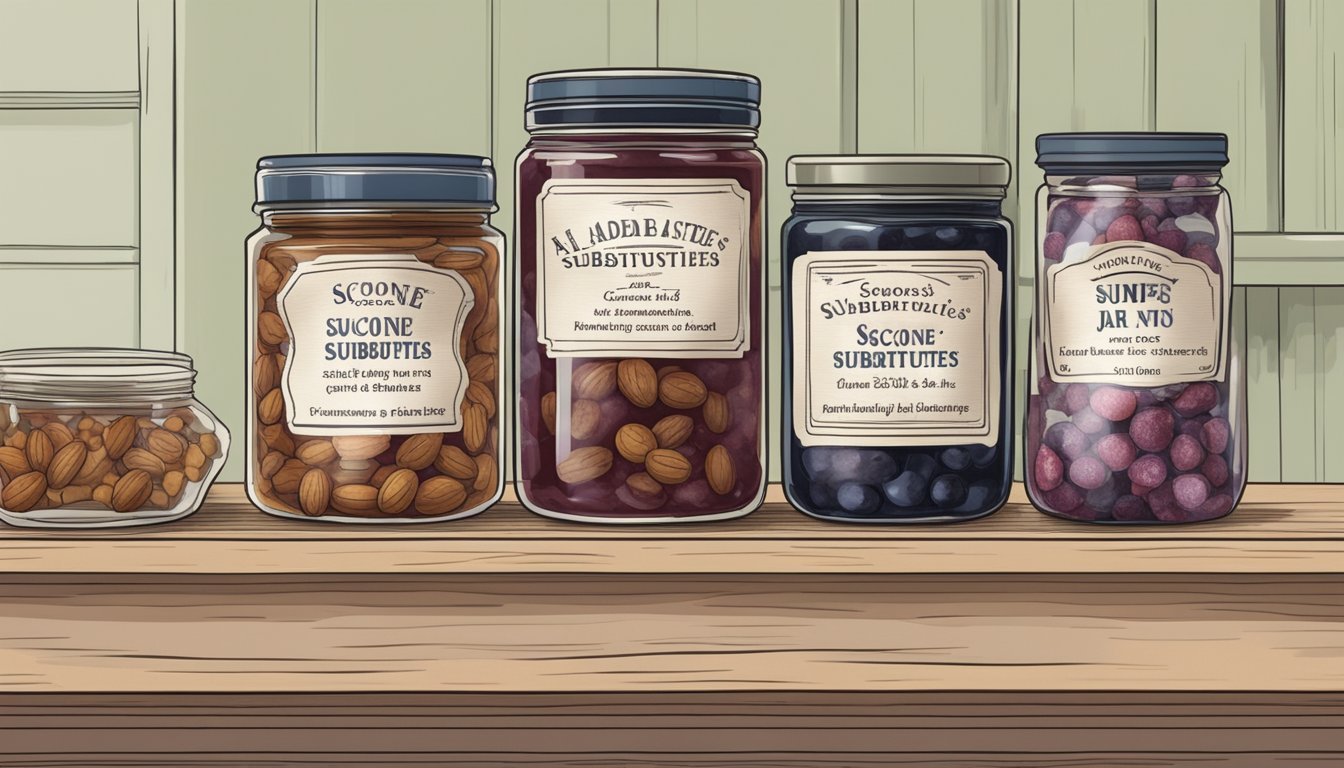Scone Substitutes
Top Alternatives for Traditional Recipes
Scones are a cherished part of tea time, a tradition that offers comfort and a touch of elegance to afternoon breaks. Their flaky texture and rich flavor make them an ideal companion to a hot cup of tea. However, traditional scone recipes often call for ingredients that some bakers may wish to substitute due to dietary restrictions, lack of availability, or a desire to experiment with flavor and texture.
For those looking to make scones without eggs, several substitutes can be employed to achieve the desired consistency and rise. Ingredients like milk, which is a staple in scone recipes, can be combined with acid to replace the leavening effect of eggs. Other alternatives, such as certain fats, are sometimes omitted to create lighter, fluffier scones, proving that even a small adjustment in the recipe can lead to a different baking outcome.
When baking scones, precision in measuring and understanding the function of each ingredient is crucial. Substitutes must be chosen thoughtfully to maintain the balance between a tender crumb and the ability of the scone to rise properly. Through careful selection of ingredients, bakers can craft scones that cater to a range of dietary needs and preferences while still upholding the essence of this classic tea-time treat.
Fundamentals of Scone Baking
Mastering the art of scone baking requires precision and an understanding of how ingredients interact in the baking process. The following sections break down the essentials to crafting perfect scones.
Understanding the Basic Scone Recipe
The quintessential scone recipe includes all-purpose flour, baking powder, butter, sugar, salt, and a liquid component such as milk or heavy cream. Here's a fundamental breakdown of the ingredient portions:
All-purpose flour: 2 cups
Sugar: 1/4 cup
Baking powder: 1 tablespoon
Salt: 1/2 teaspoon
Butter (cold and cubed): 1/2 cup
Milk or heavy cream: 3/4 cup
One begins by whisking together the dry ingredients in a bowl to ensure an even distribution, followed by cutting in the cold butter until the mixture resembles coarse crumbs. Next, the wet ingredients are added to form a dough that is neither too wet nor too dry.
The Science of Baking Scones
Baking scones is as much a science as it is an art. The key to their characteristic texture and rise lies in the interplay between baking powder and the oven's temperature. Baking powder acts as a leavening agent, releasing carbon dioxide when hydrated and heated, causing the dough to rise. For a good rise, preheating the oven to the right temperature, usually around 425°F (220°C), is crucial.
It's important to avoid overworking the dough, as this can lead to tough scones. The dough should be handled as little as possible to keep the butter cold; this ensures a flaky texture as the butter melts and creates steam pockets during baking.
Choosing the Right Ingredients
The right ingredients are the cornerstone of scone baking. Butter is non-negotiable for its role in creating tender and flaky layers. The fat content in milk, heavy cream, or buttermilk influences the moisture and richness of the scones. Higher fat liquids like heavy cream contribute to a richer taste and tender crumb.
Here's a comparative list of liquid ingredients and their impact on scones:
Whole milk: lends mild flavor and tender crumb
Buttermilk: acidic, contributes to a softer texture with a slight tang
Heavy cream: yields richer and tender scones
For sweetness, sugar is used, but the quantity can be adjusted according to taste or if other sweet elements are being added. Eggs can be incorporated for additional structure and color but are not present in all scone recipes. It is essential to sift the flour to prevent clumps and ensure a uniform mixture. The resulting dough should be patted into shape and cut into desired sizes before being brushed with milk or egg wash to achieve a golden brown finish upon baking.
Ingredient Substitutions
This section explores various substitutes that can be used in scone recipes, catering to dietary preferences and restrictions, without compromising on taste or texture.
Alternatives for Dairy
Milk: One can replace traditional milk with plant-based alternatives such as almond milk, soy milk, or oat milk. When using these substitutes in scone recipes, keep the same measurement as dairy milk to maintain consistency and moisture levels.
Butter: For those avoiding dairy, vegan butter or cold coconut oil are suitable alternatives for conventional butter. Alternatively, unsalted or salted butter can be interchanged if required, adjusting added salt accordingly.
Heavy Cream: A 1:1 mixture of milk and melted butter can replicate heavy cream. In vegan baking, full-fat coconut milk offers a comparable richness and helps create a tender crumb.
Health-Conscious Options
Reducing Calories and Fat:
Butter: Substitute half the butter with unsweetened applesauce to reduce fat content while still providing moisture.
Sugar: Lower-calorie sweeteners or puréed fruit such as bananas can replace refined sugar to reduce calorie intake.
Increase Nutrient Content:
Whole Wheat Flour: Substitute all-purpose flour with whole wheat flour for additional fiber.
Yogurt or Buttermilk: Substitute heavy cream with low-fat yogurt or buttermilk to cut fat and introduce beneficial probiotics.
Gluten-Free Substitutes
Gluten-Free Flour Mixes: Ready-made gluten-free flour blends designed for baking can substitute all-purpose flour cup-for-cup. The addition of xanthan gum may be necessary to mimic gluten's binding properties.
Individual Gluten-Free Flours:
Almond Flour: Almond flour adds a nutty flavor and is rich in protein, though it may require adjustments in liquid ratios.
Coconut Flour: Highly absorbent and gluten-free, coconut flour is an option for scone recipes but should be combined with other flours to avoid a dry texture.
In baking scones, one must consider that ingredient substitutions can alter taste, texture, and nutritional content, so adjustments to proportions and additional ingredients such as baking powder might be necessary for the best results.
Techniques and Tips
Creating the perfect scones requires a blend of precision and skill. The following techniques and tips focus on the mixing methods, textural achievements, and ingredient temperature control essential for making scones that are both delightful and delicious.
Mixing Methods for Perfect Dough
The key to a perfect scone dough lies in the method used for combining the ingredients. Using a pastry blender or two forks to cut cold butter into the flour helps to distribute fat evenly without overworking the dough. For those preferring modern conveniences, a food processor can be used to pulse ingredients until the mixture resembles coarse crumbs. However, it is crucial to avoid over-mixing as this will toughen the scones and inhibit their ability to rise properly.
Achieving the Desired Scone Texture
To obtain that coveted flaky scone texture, one must carefully balance moisture and fat. This is best achieved by starting with ingredients like cold butter, which, when cut into the flour, forms small pockets that create a layered texture as they melt during baking. The patting technique is also important: gently pat the dough into shape rather than rolling it out, which can crush those buttery layers. Before baking, place the shaped scones on a baking sheet to rest, ensuring they remain cold; this will contribute to a better rise and a golden exterior.
Tips for Keeping Ingredients Cold
Temperature control is critical in scone making. Here are some concise steps to keep ingredients cold:
Butter: Freeze the butter and then grate it into the flour mixture.
Dough: Chill the dough before shaping and once more before baking.
Tools: Keep all tools, such as bowls and blenders, cool; refrigerate them prior to use if necessary.
By adhering to these techniques and maintaining a careful eye on temperature control, bakers can master the scone-baking process for a result that is as delicious to eat as it is satisfying to make.
Recipe Variations
Exploring the versatility of scones allows for a delightful array of sweet and savory options. Personalizing scones through various ingredients and flavor combinations can elevate the taste and cater to different preferences.
Sweet Scone Options
Sweet scones often feature ingredients like sugar, chocolate chips, or dried fruit to cater to those with a sweet tooth. A simple scone recipe can be transformed with the addition of:
Chocolate Chip Scones: Fold in a generous handful of chocolate chips before baking for a classic treat.
Cinnamon Scones: Mix in ground cinnamon for a warm, spicy note; pair with cinnamon-flavored glaze for extra indulgence.
Dried Fruit: Incorporate raisins, currants, or other dried fruits into the dough for a textural contrast and a burst of sweetness.
Using jams, such as classic strawberry or tangy lemon curd, as an accompaniment, can further enhance the flavor profile of these sweet scones.
Savory Scone Variations
For those who prefer less sugar, savory scones are an excellent option. These scones can range in flavor from subtle to bold and often integrate:
Cheese Scones: Add grated cheese, such as cheddar, to the dough for a rich, savory bite.
Onion and Herb Scones: Combine finely chopped onion with herbs like rosemary or thyme to achieve a fragrant and savory scone ideal for pairing with soups or stews.
Butter Scones: Incorporate cold, diced butter for tender, flaky scones that pair well with a variety of toppings and spreads.
The inclusion of salt sharpens these savory flavors, contributing to their enjoyment.
Flavor Enhancements
To further refine the flavor of both sweet and savory scones, consider these enhancements:
Vanilla Extract: When seeking a subtle background note, a teaspoon of vanilla extract adds a warm, aromatic essence to sweet scones.
Cinnamon: For a hint of warmth in the taste, a dash of cinnamon complements both sweet and savory creations.
Lemon Zest: A touch of lemon zest can brighten the flavor of sweet scones, marrying particularly well with glazes or creams.
Experimenting with different flavor combinations allows for a personalized scone experience tailored to one's exact tastes.
Serving and Presentation
When serving scones, the key is to enhance their taste with suitable accompaniments and to ensure they are presented attractively, making them irresistible at breakfast or brunch (What wine goes well with brunch?).
Complementary Foods and Toppings
Scones are traditionally served with a selection of toppings that can vary from sweet to savory. For a classic tea time treat, the sweet toppings often include:
Jam: Strawberry preserves or raspberry jam are popular for their sweet and mildly tart flavors.
Clotted Cream: A dollop of rich clotted cream adds a creamy texture.
Butter: Unsalted butter for a simple yet satisfying spread.
Lemon Curd: The bright, tangy taste of lemon curd pairs exquisitely with scones.
Nut Butter: A spread of almond or peanut butter for a nutty twist.
For a savory touch, especially during brunch, one can opt for:
Fresh Fruit: Slices of strawberries or a tropical fruit salad to bring freshness.
Cheese: Aged cheddar or whipped feta for a sharp taste contrast.
Presentation Techniques
The presentation of scones should accentuate their appealing golden brown exterior and soft texture. Here are some tips to ensure scones look as good as they taste:
Serving Plate: Use a decorative serving plate to elevate the appearance, aligning with the ambiance of a high tea.
Arrangement: Scones should be neatly placed, allowing room for spreads and toppings.
Pastry Cutter: Utilizing a pastry cutter for uniform shapes contributes to a professional look.
Spatula: Employ a spatula for transferring the scones to avoid breaking them, maintaining their integrity.
By following these serving and presentation recommendations, scones can be the highlight of any breakfast or brunch gathering.
Storage and Preservation
Proper storage and preservation are essential for maintaining the quality and extending the shelf life of scones. The following methods provide efficient strategies to keep scones at their best, either for immediate consumption or future enjoyment.
Freezing and Reheating Recommendations
Before freezing, ensure scones are completely cool to prevent moisture buildup.
Place scones on a baking sheet to freeze individually, then transfer to an airtight container or sealable freezer bag.
Label the container with the date. Scones maintain their quality for up to 2 months when frozen.
Reheating Scones:
Preheat the oven to 325°F (165°C).
Place frozen scones on a baking tray without thawing.
Reheat for about 10 minutes or until fully warmed through.
Keeping Scones Fresh
Storage Tips:
Keep scones in an airtight container to protect from excess moisture and staleness.
Line the container with a paper towel to absorb any moisture.
Store at room temperature for 2-4 days for optimal freshness.
Avoiding Moisture:
Let scones cool before storing to prevent condensation.
If stored while still warm, scones may become soft and mushy.
By following these strategies, one can ensure their scones retain their desired texture and taste while maximizing their shelf life.
Nutritional Information
When considering the nutritional content of scones, it is essential to examine their calorie content and macronutrient breakdown. A typical scone harbors about 148 calories. For those tracking macronutrients, they contain a balance of fat, carbohydrates, and protein, with a calorie distribution of approximately 38% fat, 52% carbs, and 10% protein.
In terms of sugar content, scones can vary. Their sugar levels can make a difference for those following a healthy eating plan, particularly if managing conditions such as diabetes or adhering to a weight management program. Individuals should be cautious and consider the sugar content in addition to the overall calorie count when incorporating scones into their diets.
For those with dietary requirements, making scones without egg can cater to vegan or allergy-related needs, offering an alternative while maintaining similar texture and taste. Using substitutes like applesauce or flax seeds can also add nutritional value, such as fiber or omega-3 fatty acids.
A table summarizing key nutritional components per scone (standard size):
Nutrient Amount Calories 148 Total Fat 16g (21% DV*) Saturated Fat 4.3g (22% DV*) Carbohydrates 52% Sugars Varied Protein 10%
*DV: Daily Value based on a 2000-calorie diet
For healthier alternatives, individuals can explore recipes that reduce fat content or employ ingredients like whole wheat flour and add-ins like cinnamon to enhance the flavor without significantly increasing the calorie count. As with any treat, moderation is key in a balanced and health-conscious diet.









